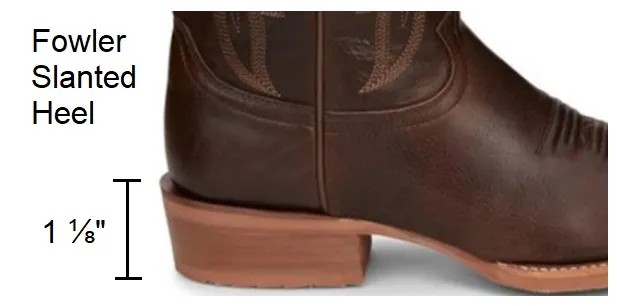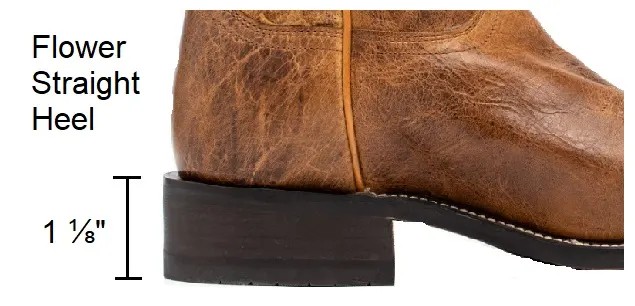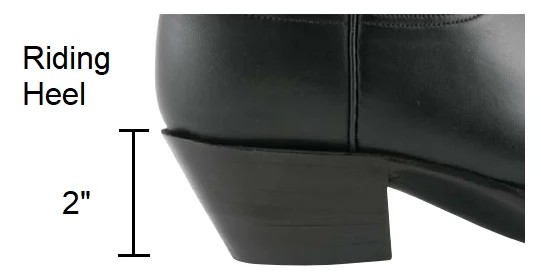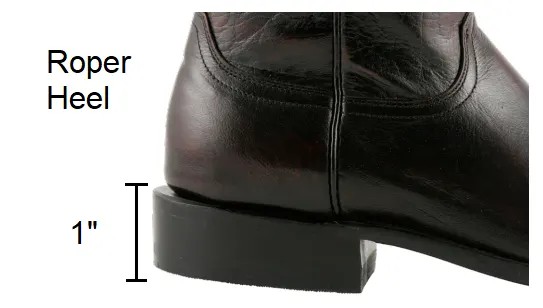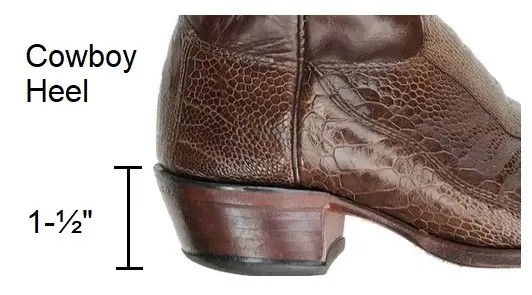- Main Page
- Age on other Planets
- Aliens
- American Flag
- Annuals
- Avoiding Scams
- Awareness Ribbons
- Baileys Liqueur
- Bananas
- Banana Tree, Grand Nain
- Banana Tree, Ice Cream
- Banana Tree, Zebrina Rojo
- Beekeeping
- Bleach
- Boogaloo
- Bookmarks
- Boot Anatomy
- Boot Fit Guide - Cowboy
- Boot Glossary
- Boot Leathers
- Boot Makers
- Boot Retailers
- Boot Styles - Western
- Boot Toes & Heels - Western
- Boot Toes & Heels - Work
- Bullying
- Cats
- Chillicothe Businesses
- Christmas Tree
- Ciroc Vodka
- Coffee Pods
- Color Codes Chart
- Consumer Resources
- Consumer Resources - Elders
- Country Stars
- Cowboy Hats
- Cowboy Hat Etiquette
- Cowboy Hat Sizing
- Cowboy Sites
- Credit Score Checkers
- Credit Scores
- Disaronno Amaretto
- Donation
- Drug Test
- Eye Teasers
- Fonts
- Foods To Regrow
- Free For All Links
- Friend
- Funny Things
- Fun Stuff
- Giving
- Growing Blueberries
- Halloween
- Halloween Treats
- Health Pages
- Hello!!
- Home Bar
- Horse Sites
- House Plants
- Hunger Facts
- Interesting Facts
- Kinds of Tea
- Logger vs Lineman
- Lucky Bamboo
- Macaroni!!
- Missouri
- Missouri Prisons
- National Foundations
- Never Forget
- New Page Soon
- One Little Rose
- Orchid Growing
- Orchid Sources
- PayPal.Me
- Perennials
- Phobias A-Z
- Plant Care
- Plant Zone Map
- Propagating Plants
- Ragtime Music
- Recipes I like
- Roses
- Sadie & Beethoven
- Scam Calls
- Smile
- Speed Test
- Spices You Need
- Spices I Have
- Steel Toe vs. Comp. Toe
- Superstitions
- Symbols
- Tequila Rose
- The Ten Commandments
- Top Alcohol
- Top Animated Movies
- Top Comedy Movies
- Top Expensive Movies
- Top Modern Westerns
- Top 100 Westerns
- Toyota Yaris 2008
- Toyota Yaris 2012
- Tree, Calamondin Orange
- Tree, Meyer Lemon
- Tree, Persian Lime
- US Bill of Rights
- US Constitution
- US Declaration of Independence
- UV Vodka
- Weight on other Planets
- Wicca Pages
- Wine Clubs
- Wines
- Wines - Missouri
Needed to read PDF's
Western Boots
Soles, Toes & Heels
When buying your initial pair of cowboy boots, focus on fit and intended use. Choose between traditional Western boots for a classic look and roper boots for comfort. Pay attention to toe shapes—pointed for style, rounded for room, and square for a modern touch. Heel height matters too: lower heels for walking, higher for riding. Leather options vary from durable cowhide to luxurious exotic skins. Verify a snug fit at the instep and heel slip of about a quarter to half-inch. Proper care, including regular cleaning and conditioning, prolongs their life.
Traditional cowboy boots have nearly always been made with a smooth leather sole with a stacked leather heel. This heel-sole combination was (and still is) the best for riding horses with feet in the stirrups. The majority of folks who wear cowboy boots today rarely mount a horse, however, which has led to the availability of many other types of Western boot soles and heels.
Cowboy Boot Soles
The sole of a cowboy boot plays a crucial role in its functionality, comfort, and durability. Depending on your lifestyle and the intended use of your boots, different types of soles offer unique advantages. Below is a breakdown of common cowboy boot sole types and their characteristics.
1. Leather Soles
Leather soles are the classic choice for cowboy boots, offering timeless style and tradition. These soles are often crafted from high-quality cowhide and are ideal for formal occasions or traditional wear.
Advantages:
- Elegant Appearance: Leather soles provide a sleek and polished look.
- Breathability: Leather allows air circulation, keeping feet dry.
- Flexibility: Over time, leather soles mold to the shape of your feet for personalized comfort.
Best for: Western dances, formal events, and casual wear in dry environments.
2. Rubber Soles
Rubber soles are a practical option for those seeking better grip and durability. They are commonly found on work boots and outdoor cowboy boots.
Advantages:
- Traction: The textured rubber provides excellent grip on various surfaces, including wet or slippery terrain.
- Shock Absorption: Rubber offers better cushioning for all-day comfort.
- Weather Resistance: Ideal for rainy or muddy conditions.
Best for: Outdoor work, hiking, and casual use in harsh weather.
3. Composite Soles
A combination of leather and rubber, composite soles aim to provide the best of both worlds. The leather section offers traditional aesthetics, while the rubber portion enhances functionality.
Advantages:
- Balanced Style and Function: Retains the classic cowboy boot look with added durability.
- Versatility: Suitable for both formal and practical uses.
Best for: Individuals who want stylish boots that can handle a variety of conditions.
4. Crepe Soles
Crepe soles, made from natural rubber, are soft and cushioned, making them a comfortable choice for extended wear.
Advantages:
- Comfort: The soft material reduces foot fatigue.
- Quiet Step: Crepe soles absorb noise, perfect for indoor use.
Best for: Casual everyday wear or individuals seeking extra comfort.
5. Vibram Soles
Vibram soles are known for their rugged design and exceptional durability, often used in cowboy boots designed for heavy-duty work or extreme outdoor conditions.
Advantages:
- Durability: Resistant to wear and tear, suitable for demanding environments.
- Enhanced Grip: Excellent traction on rugged terrain.
Best for: Work boots or outdoor adventures like horseback riding and hiking.
Choosing the Right Sole
Selecting the right sole depends on your needs. Leather soles are perfect for classic style, rubber soles are ideal for practical functionality, and composite soles offer a blend of both. Crepe soles prioritize comfort, while Vibram soles provide heavy-duty performance.
Understanding the different types of cowboy boot soles ensures that you make a choice that complements your lifestyle while enhancing comfort and durability.
Cowboy Boot Toes
When it comes to shopping for cowboy boots, there are many styles to choose from. One of the most important aspects of cowboy boots is the toe style.
The most popular cowboy boot toe styles are pointed, snip, classic, round, fashion, square, and broad square. Each style has its own unique shape that is practical for different purposes, such as horseback riding, fashion, or work.
Choosing the right toe style is important when buying a pair of cowboy boots. You want to sure your feet have the support, comfort, and stability they need based on the activity you are doing.
Though these are the most popular toe styles, some cowboy boot brands will have their own specific names for styles. In addition, some companies will list the name of the style as simply a letter or number. Though it can be a bit confusing, these are the most universal styles you can find.
1. Pointed

Pointed toe, also known as J toe or 1 toe, is one of the most common styles you will find. This style has been a classic since the 1950s and grew in popularity in the 2000s.
The pointed toe is a versatile style, as it is ideal for formal wear and everyday wear. It offers a traditional western look that pairs great with many different outfits.
Pointed toes are stylish, but also can be practical as well. They can make a suitable option for horseback riding as they can easily slip into a western stirrup.
2. Snip
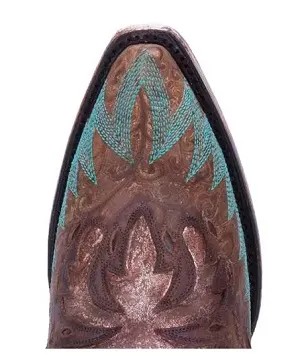
Snip toe, also known as D toe, X toe, or N toe, is tapered to a point, but with a flat tip. The style is a variation of the traditional pointed toe.
Snip toe is a particularly great style for going out on town or for formal events. It is a relatively newer style, but it has become a favorite among many people. Snip toes are about style above anything else.
3. Classic

Classic toe, also known as R toe, is one of the most versatile styles. It is a great option for walking, horseback riding, and everyday wear.
Classic is one of the most common labels you will see on a boot. However, there is some debate about whether pointed or rounded is the classic western toe shape. Typically, the classic style has a slightly pointed toe shape and a tip that tapers off to a point.
4. Round

Round toe, also known as roper toe or U toe, is a traditional style that is comfortable and practical. It is a great option for horseback riding, work, and walking.
The round toe is tapered but rounded at the tip. It is the most common style of toe found in cowboy boots.
Not only is the round style comfortable, but it also pairs well with many different outfits. It provides stability and support, while also keeping you balanced in the saddle.
5. Fashion

Fashion toe, also known as X toe or A toe, puts style above all else. The toe comes to a narrow, sharp point for a high-end appearance.
The fashion toe is a great style for formal events, dancing, and going out. It has a high-fashion look that adds a hint of western chic to any outfit. Though stylish, this option is not ideal for walking or working.
6. Square
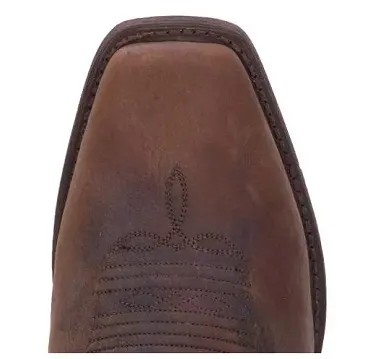
The square toe, also known as the French toe or hognose toe combines the traditional look of the classic toe with a modern western twist. It gives the toes more room to spread out, providing stability and support.
The square choice is a common style you will see cowboys and cowgirls wearing at rodeos. It is a great option to wear if you spend a lot of time on your feet, whether you are working, walking, or horseback riding.
The square toe puts comfort and function above all else. Some square boots have elongated, squared-off toes, whereas others are wider and shorter.
7. Broad Square
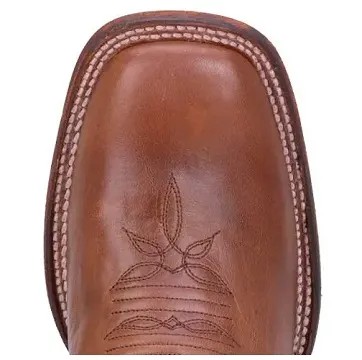
The broad square, also called the wide toe square, is a variation of the square toe that offers more width. It is becoming an increasingly popular style, especially among those with wide feet.
Broad square is an ideal option for those who do a lot of walking and working throughout the day. They are a popular choice among workers at construction and oil sites. This style can be used for horseback riding, however, some find them to be too wide to comfortably fit in the stirrup.
Broad square toes are great because they give your toes plenty of room to spread out. In addition, you can easily use cushioned insoles with them as well.
What Is a Cowboy Boot Heel?
Cowboys of the 19th century roaming the desert and plains of the midwest relied on their boots, traditionally made of cowhide leather, to protect themselves from brush and keep their boots secure while riding a horse.
Cowboy boot heels served a practical purpose in handling the bumpy and rugged terrain. High heels date back to the 10th century, when Persian soldiers would wear them to remain in their stirrups and maintain stability while shooting bows and arrows.
Over time, heels for riding horses became associated with power and nobility since owning a horse symbolized wealth. European aristocrats latched on to this new fashion as a symbol of strength and military expertise.
Men stopped wearing heels around 1730 after becoming narrower, ornamental, higher, and essentially more feminine. But not everyone ditched the heel. In the 19th century, the cowboy boot was the quintessential example of the masculine boot heel.
Today, cowboy boots feature a rounded heel, also known as a Cuban heel, which provides support in a stirrup. Its moderate height (between 1-2 inches) is the perfect size for those searching for a refined and masculine look.
Cowboy boot heels can range in shape and size, depending on the function. They are made out of various materials, including leather, rubber, and synthetic materials. Rubber heels can provide excellent balance and traction. Leather can be best for line dancing unless you are dancing on asphalt or concrete.
Parts of the Cowboy Boot Heel
Cowboy boots have an iconic and rugged design and shape comprising several components, including the vamp, outsole, instep, toe box, insole, welt, shaft, and pull strap. The classic heel is one of the boot’s most distinctive features.
Cowboy boot heels come in various designs and heights and can include the following parts:
- Heel counter: A heel counter is a piece of tough and supportive material such as leather found in the back of the boot. It is designed to reinforce the heel area to improve support, comfort, and stability.
- Heel pad/guard: Heel pads, usually made of rubber, cover the heel area, reduce shock, and protect heels from further wear and tear, so they last a bit longer. For best results, avoid using heel pads on new boots since it may throw off your gait, and use it to even out any wear and tear. Heel pads may be replaced when they are worn down to maintain your normal gait.
- Heel rand: A heel rand is usually a piece of rubber between the boot's sole and its upper. It protects the joint between these two layers and provides a watertight seal.
Cowboy Heel Heights
There are many components to consider when it comes to cowboy boots, but heel height is one of the most important factors to consider. Cowboy boot heel heights come in four main types: low, standard, high, and spiked.
Low Heel
Low heels, typically 1 inch tall, are super comfortable for everyday wear. The relatively low heel offers the ultimate flexibility out of all heel heights. Although not common in cowboy boots, it is found in roper boots.
Low heel boots are usually best for walking, running, ranch work, and other outdoor activities. Since they are relatively lightweight, they are comfortable to wear in the office or on a night out.
Standard Heel
Standard heels, usually around 1-1 ½ inches tall, have flat bottoms and are best for walking, running, and ranch work. The wide and flat bottom of the heel makes it a popular and comfortable choice for any cowboy. Standard heels are not ideal for horseback riding.
High Heel
High heels are about 2 inches tall and have wide and flat bottoms. They are mainly used for horseback riding or as a fashion statement. The high heels provide the ultimate stability and balance when riding. High heels have a refined and striking design that is not afraid to draw attention. They are not very good for farming but can complete an outfit for a night out.
Spiked Heel
Spiked heels, about 3-4 inches high, are usually designed for women’s cowboy boots. They have a narrow base, perfect for showing off your style, but not suitable for horseback riding or farm work.
Cowboy Boot Heels
Beyond heel heights, cowboy boots have several different heel types, each designed for various functions. Consider the height, look, and shape of the heel to find the appropriate one for your cowboy lifestyle.
Common heel boot types include:
- Fowler heels
- Cowboy heels
- Roper heels
- Riding heels
- Fashion heels
Here, we will cover each type of cowboy boot heel.
Fowler Heel (Straight and Pitched)
Height: 1-⅛ inch
Fowler heels can be found in straight and pitched varieties. These low heels are a bit taller than roper heels, making them great work or walking boots.
Pitched fowler heels
Also known as slanted heels, pitched fowler heels have a sleek and elegant look, a good option for more formal occasions. They are great for securing to stirrups or taking a brisk walk.
Straight fowler heels
Straight fowler heels are not slanted like pitched fowler heels. Instead, they run straight down. They provide the right level of comfort and stability for walking.
Riding Heel
Height: 2 inches
Riding heels are moderately tall heels that have a distinct slant. Its practical shape makes it great for working on the farm and looks great, too. Plus, they can add a bit of height, giving you confidence and a cowboy swagger.
Riding heels are the traditional choice for cowboy boots. The riding heel does not have a 90-degree angle but a 60-70-degree angle that is easier to hook into stirrups and more comfortable for the horse.
Walking Heel
Height: 1-½ inches
The walking heel is a good alternative when riding heels are too high for you. This classic heel is one of the most comfortable for all-day wearing. The slightly slanted form of the heel has a wider bottom than a riding heel, providing the ultimate stability.
Walking heels are usually made from rubber rather than traditional wood. They are found in many western boots but are not the best for riding.
Roper Heel (Straight and Pitched)
Height: 1 inch
Roper heels are a blend of traditional cowboy boots and dress boots. These low heels add a touch of refinement to the rugged aesthetic of a western boot. Roper heels come in straight and slanted versions.
Roper heels are flat and stable, suitable for walking, working on the ranch, or a night out. They are lightweight, and because they have a low shaft, they are easier to put on and take off.
Cowboy Heel
Height: 1-½ inch
Cowboy heels feature a distinctive slant that can help handle demanding tasks around your property. Its angular design keeps the foot from slipping forward in the stirrup and gives you excellent control when riding.
Cowboy heels offer comfort, style, and balance for challenging farm work. Its heel is shorter than a walking heel and taller than a riding heel. Its sleeker look than riding or walking boots makes it a good pairing choice for classier occasions.
Fashion Heel
Height: 2 inches or more
Fashion heels, generally found in boots for women, are taller than traditional cowboy boot heels and have a distinctive slant. They are usually made from rubber for quiet footsteps and a bounce in your step.
FAQs About Cowboy Boot Heels
Cowboy boot heels serve a practical purpose, but also function as fashionable components that can tie your look together. Here, we answer your most frequently asked questions about cowboy boot heels, why they are sometimes slippery, and how to find the perfect fit.
Which Cowboy Boot Heels Should I Choose?
After reading about the differences in height, shape, and function between cowboy boot heel types above, you can make a more informed purchase. Everyone’s preferred boot heel will differ depending on their lifestyle and work.
Work on a ranch or love to hike? Invest in cowboy boots with low heels. Low heels provide you with better stability and balance than high heels
Love to go horseback riding? Get yourself some riding boots, which have moderately tall heels designed to keep your boots secured in the stirrups.
Looking to spice up your everyday outfit? Try out fashion boots for women. These high heel boots make a fashion statement but are not fit for working in the dirt and mud.
In today’s world, having just one pair of boots may not be enough. An entire cowboy boot wardrobe, stocked with low and high heel options, can keep you looking good for any occasion.
Should Cowboy Boot Heels Slip?
Cowboy boots should slip a little in the heel. Foot movement causes the boot to flex and requires space for the heel to ride up slightly. When you first buy boots, the heel counters are stiff and can cause more slippage. As you break in your boots, they mold to the shape of your heel. One-quarter to a half-inch heel slip is normal.
Why Are Cowboy Boots Slippery?
Traditional cowboy boots and their soles were made of leather and designed to be used on the farm and to ride horses. Because of this, cowboy boots need to be slippery, making them easier to slide in and out of the stirrup.
The high heel was designed to keep their feet secure while riding. Today, western boots can come with leather soles, but rubber sole and heel alternatives are an excellent anti-slip option.
Find me on Social Media
 |
Don't forget to bookmark me to see updates.. Copyright © 2000 - 2025 K. Kerr Most recent revision July 26, 2025 11:50:43 AM
**DISCLAIMER: THIS WEBSITE DOES NOT PROVIDE MEDICAL ADVICE: The information, including but not limited to, text, graphics, images and other material contained on this website are for informational purposes only. No material on this site is intended to be a substitute for professional medical advice, diagnosis or treatment. Always seek the advice of your physician or other qualified health care provider with any questions you may have regarding a medical condition or treatment and before undertaking a new health care regimen, and never disregard professional medical advice or delay in seeking it because of something you have read on this website. |

